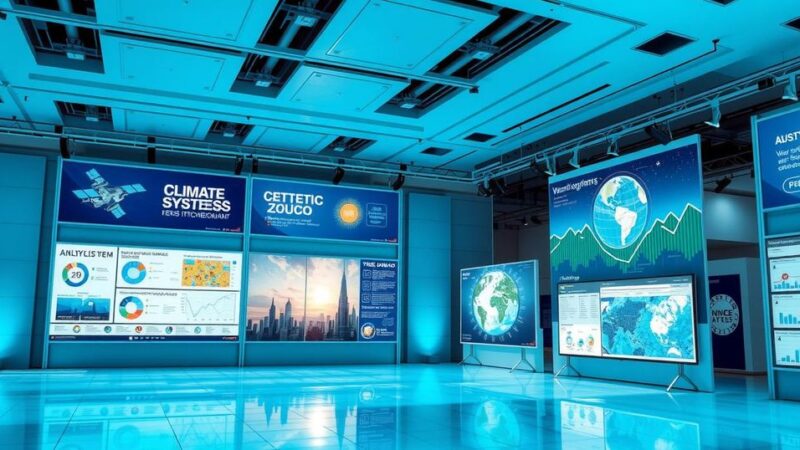In 2024, China failed to meet key climate goals as emissions slightly increased and coal remained dominant despite record growth in renewables. The country has made insufficient progress toward reducing carbon intensity targets set for the Paris agreement, indicating considerable challenges ahead. Experts stress the need for significant reform, as current industrial growth outpaces clean energy developments.
China has recently reported that it failed to meet an important climate target in 2024, as emissions slightly increased while coal continued to play a significant role in energy production, despite unprecedented additions to renewable energy sources. According to the National Bureau of Statistics (NBS), carbon intensity—which reflects carbon dioxide emissions per unit of GDP—decreased by 3.4% in 2024, falling short of the official objective of a 3.9% reduction. This performance positions China far from its overarching goal of an 18% reduction in carbon intensity from 2020 to 2025.
The latest data indicated a slight uptick in carbon emissions compared to the previous year, which, although minor, raises questions about whether China may be nearing its peak emissions ahead of the 2030 target. Nevertheless, experts project that achieving a 65% reduction in carbon intensity from 2005 levels by 2030 will pose significant challenges for China. Lauri Myllyvirta, lead analyst at the Centre for Research on Energy and Clean Air, stated, “Even with optimistic assumptions for 2025, carbon dioxide intensity must fall by 22 percent in (the period) 2026-2030 to meet China’s key Paris target.”
China, despite being the world’s largest greenhouse gas emitter, has also positioned itself as a leader in renewable energy. While the country aims to reach peak carbon emissions by 2030 and achieve net zero by 2060, some analysts had anticipated that slower economic growth and rapid expansion of renewable energy would lead to reduced emissions in 2024. Experts caution that it may take years of data to confirm whether a peak in emissions has indeed been established. Meanwhile, the robust growth of the energy-demanding industrial sector continues to impede progress toward these climate goals. Muyi Yang, a senior energy analyst at Ember, asserted that “rapid industrial growth has driven energy demand to increase at a pace that outstrips the buildup of clean energy infrastructure.
As of last year, total energy consumption rose by 4.3% compared to 2023, with coal still accounting for over half of China’s energy mix. Although renewable energy saw significant expansion, it remains apparent that coal consumption has not yet decreased. Yang noted that China is nearing a point where all new electricity demand will be satisfied exclusively by renewable sources. He remarked that once this transition occurs, coal power will begin to decline in absolute terms. Beijing is set to disclose details for its upcoming 15th Five-Year Plan, which will cover the 2026 to 2030 period, potentially including revised climate and energy objectives. In February, the country was also slated to submit updated emissions targets under the Paris agreement; however, it missed this deadline, akin to many nations, while UN officials remain optimistic that most Nationally Determined Contributions (NDCs) will be submitted this year.
In summary, China did not meet its crucial climate target for 2024, with emissions slightly rising alongside continued reliance on coal despite increases in renewable energy. Achieving future climate goals, including a significant reduction in carbon intensity, poses substantial challenges, particularly due to robust industrial growth. The nation’s commitment to peak emissions by 2030 and reach net zero by 2060 will require transformative reforms and substantial investments in clean energy infrastructure.
Original Source: www.france24.com






